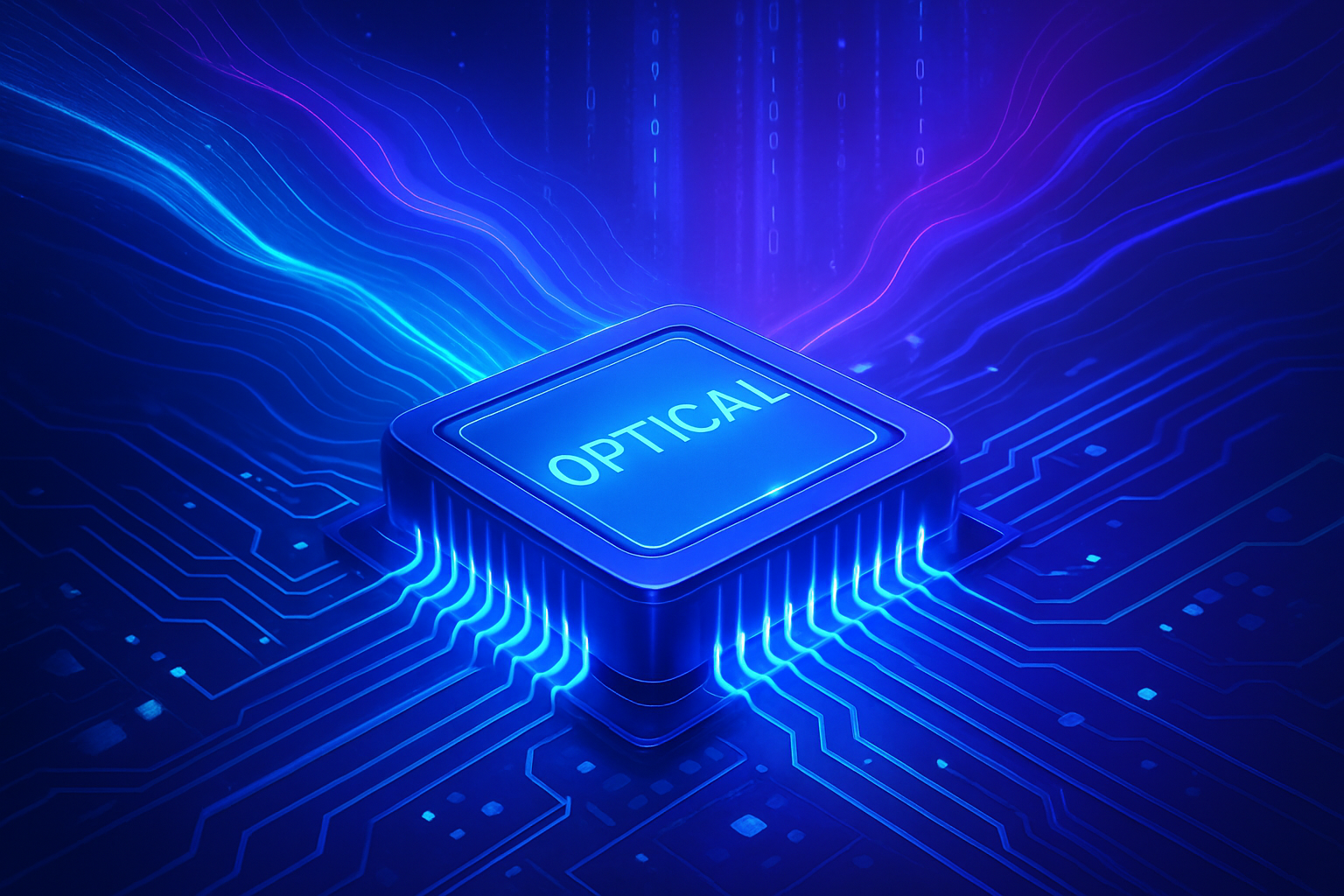The quest for increased energy efficiency in artificial intelligence (AI) is intensifying. A revolutionary innovation is emerging: an optical chip promises to increase energy efficiency by up to *100 times*. This advancement emerges as a viable response to the soaring demands of AI systems, often burdened by staggering energy consumption. Sustainability challenges and energy savings dominate the current technological discourse, prompting researchers to explore bold solutions.** The integration of light in data processing optimizes performance while reducing electrical demand. Materials science and engineering harmonize to shape the future of intelligent systems. In this context, the optical chip stands out as an essential innovation catalyst in the contemporary technological landscape.
Innovation in Silicon Photonics
A research team from the University of Florida has designed an advanced optical chip capable of performing complex calculations for artificial intelligence (AI) using properties of light. This development transforms data encoded by light into instantaneous convolution results, significantly enhancing the performance of AI dedicated to image recognition and other similar tasks.
Reduction of Energy Consumption
This new integrated circuit leverages optical components to perform essential operations, thereby reducing the energy required. Compared to conventional electronic chips, this innovation offers energy efficiency multiplied by 10 to 100 for the same operations, addressing the growing pressure on energy networks.
Applications and Performance
The chip architecture performs convolution operations, a crucial function in the field of machine learning. With this capability, AI systems can identify patterns in datasets of images, videos, and texts with remarkable accuracy.
Remarkable Accuracy
Tests conducted on the chip prototype have classified handwritten digits with approximately 98% accuracy, a result similar to that of standard electronic chips. This level of precision in AI tasks demonstrates the enhanced capabilities of this technology.
Fresnel Lens Technology
The chip uses Fresnel microlenses, which are ultrathin versions of conventional lighthouse lenses, directly integrated onto silicon. These lenses, thinner than a human hair, allow the laser to perform the mathematical transformations necessary for executing calculations.
Wavelength Multiplexing
By adopting a wavelength multiplexing approach, researchers have demonstrated that the chip can process multiple data streams simultaneously. The use of lasers of different colors represents a significant advantage, increasing efficiency without compromising speed or quality of results.
Collaboration and Future Perspectives
This research was conducted in collaboration with the Florida Institute of Semiconductor, UCLA, and George Washington University. Chip manufacturers like NVIDIA are already using optical elements in some of their architectures, making the integration of this technology smoother for the future.
Professor Volker J. Sorger, leader of the study, predicts a future where on-chip optics becomes an essential component of every AI chip. This innovation could transform the way artificial intelligence systems are developed and used on a daily basis.
Related Links
- Harnessing silicon photonics for sustainable AI hardware
- Huawei launches Ascend 910C despite US restrictions
- STMicroelectronics set to introduce a revolutionary photonic chip
- The UK encourages a unique AI chip design opportunity
- A photonic processor for 6G
Frequently Asked Questions about Optical Chips and Energy Efficiency for AI Tasks
What is an optical chip, and how does it work?
An optical chip uses light to perform data processing, thereby replacing part of the processes based solely on electricity. It performs convolution operations using optical components integrated into a silicon chip, allowing for a significant reduction in energy consumption.
How does the optical chip reduce the energy consumption of AI systems?
By using light to perform calculations, the optical chip can achieve energy efficiency levels 10 to 100 times higher than traditional electronic chips, which decreases the load on electrical grids while improving the performance of AI models.
What are the advantages of using lasers and lenses for AI calculations?
Lasers and lenses enable fast and efficient mathematical transformation of data while consuming less energy. This opens up the possibility of processing complex data, such as image recognition, much more efficiently.
What type of AI tasks can be improved with this technology?
This technology can be applied to resource-intensive tasks such as image recognition, video analysis, and language processing, which traditionally require a lot of energy to operate effectively.
What accuracy can be expected from this new optical chip?
Tests conducted on the chip prototype show an accuracy of approximately 98% in the classification of handwritten digits, which is comparable to the performance of traditional electronic chips.
What research has been conducted on this chip and by whom?
A team of researchers from the University of Florida developed this optical chip. The results of their research were published in the journal Advanced Photonics, highlighting significant advances made in the field of AI and optical technologies.
How can this technology influence the semiconductor industry?
With the increasing integration of optical elements in AI systems, this technology could become a key element in chip design, allowing manufacturers like NVIDIA to reduce energy consumption and improve the overall performance of their products.






